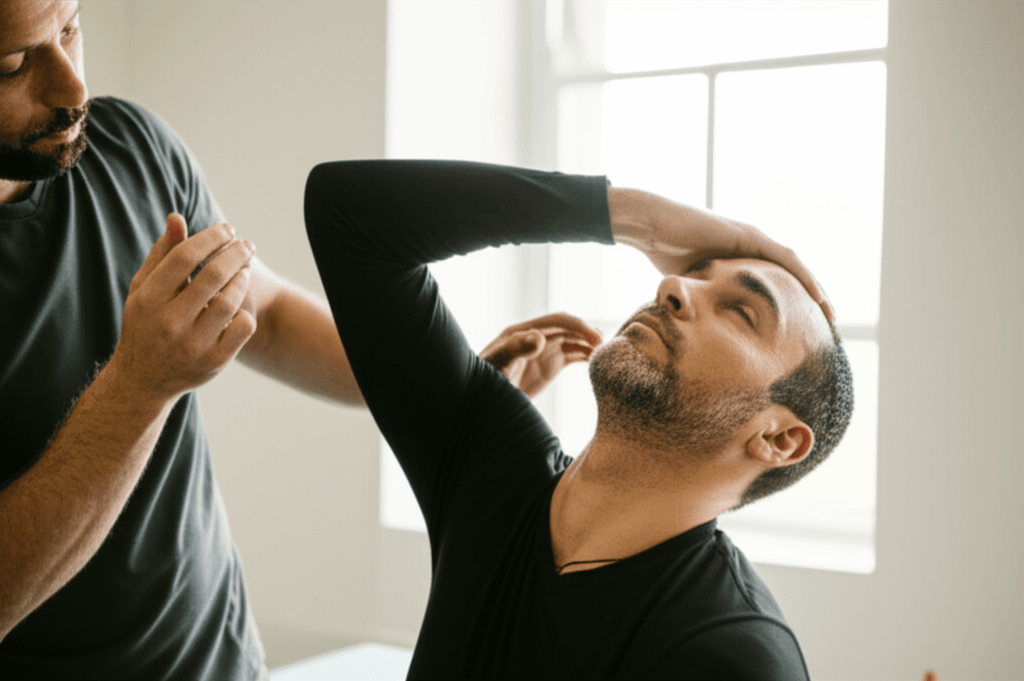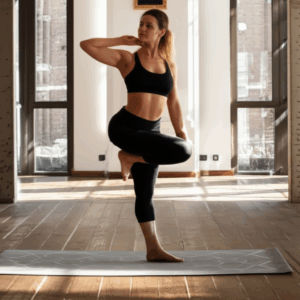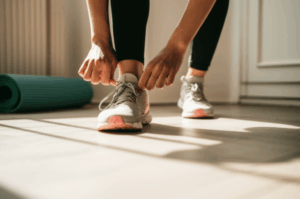Do you often find yourself hunched over your smartphone, tablet, or computer, feeling a dull ache in your neck and shoulders? You’re not alone. This increasingly common affliction, dubbed “tech neck,” affects millions, with symptoms ranging from headaches and stiffness to sharp pain and even numbness or tingling in the arms and hands in severe cases. But the good news is, tech neck is largely preventable and reversible with consistent effort.
Tech neck, or “forward head posture,” occurs when the neck muscles strain to hold your head up while you look down at electronic devices for extended periods. Your head, which can weigh between 8 and 11 pounds, puts significant strain on your neck and spine when held in this forward-tilted position, akin to lifting a 50-pound bag of potatoes when tilted at just 45 degrees. This repetitive strain can lead to musculoskeletal fatigue, tightened muscles, and even accelerated wear on spinal discs, potentially resulting in disc herniations or pinched nerves over time.
The key to relief and prevention lies in a combination of ergonomic adjustments, frequent breaks, and targeted exercises that stretch tight muscles and strengthen weakened ones.

Understanding the Root Cause: Poor Posture and Prolonged Screen Time
The primary culprit behind tech neck is sustained poor posture while interacting with digital devices. Our natural inclination is to bring the screen closer for visual comfort, often leading to a slumped posture with the head pushed forward and shoulders rounded. This static position demands more work from your neck and upper back muscles than dynamic movement, leading to fatigue and discomfort. Americans spend an average of seven hours per day on screens, making this a widespread issue.

Essential Strategies for Prevention and Relief
Combating tech neck requires a holistic approach that integrates mindful habits with specific exercises.
Optimizing Your Workspace Ergonomics
Adjusting your environment can significantly reduce strain.
- Elevate Your Screen: Whether it’s a computer monitor, tablet, or smartphone, position your screen at eye level. For laptops, use a stand or stack books to bring the screen up. For phones, hold them higher to avoid looking down.
- Maintain Neutral Spine Posture: Aim to keep your shoulders back, chin slightly tucked, and ears aligned with your shoulders. When seated, recline your chair 25 to 30 degrees with good lumbar support. This shifts some of your body weight to the chair, reducing strain on your neck muscles and discs. Avoid sitting upright for extended periods, as this can still put pressure on your spine.
- Support Your Forearms: If using a phone while seated, consider placing pillows on your lap to support your forearms, which can help maintain better posture.
Taking Frequent Movement Breaks
Static positioning is detrimental. Incorporate regular movement throughout your day.
- Every 30-60 Minutes: Get up, walk around, and stretch your neck and shoulders every 30 to 60 minutes. Even a minute of movement can improve circulation and reset your posture.
- Standing Desks: If possible, use a standing desk to alternate between sitting and standing, ensuring the desk is at a comfortable height.

Simple Exercises to Counteract Tech Neck
These exercises focus on stretching tight muscles in the chest and front of the neck, and strengthening the muscles in the back of the neck and upper back that support proper head alignment. Consistency is key for lasting improvement.
Chin Tuck
This exercise is crucial for realigning your head over your spine and strengthening deep neck flexors.
- How to: Sit or stand tall with your chin parallel to the ground. Gently pull your chin straight back as if making a double chin, without tilting your head up or down.
- Hold: Hold for 5-10 seconds.
- Repeat: Repeat 10-20 times, aiming for this once every hour or two if working.
Thoracic Extension
This helps improve mobility in your upper back, which often rounds forward with tech neck.
- How to: Sit in a chair with a backrest that is level with your shoulder blades (avoid high-backed office chairs). Place your hands behind your head or cross them over your chest. As you exhale, gently lean back over the chair’s backrest, extending your upper spine.
- Hold: Hold for 5-10 seconds.
- Repeat: Repeat 15-20 times.
Upper Trapezius Stretch (Upper Trap Stretch)
This targets the often-tense muscles spanning the back of your neck and shoulders.
- How to: Place your right hand on top of your head. Gently bend your neck to the side, bringing your right ear toward your right shoulder. You should feel a stretch along the left side of your neck.
- Hold: Hold for 20-30 seconds.
- Repeat: Repeat 3-5 times on each side.
Levator Scapulae Stretch
Another key neck muscle that can tighten with tech neck, running from your neck to your shoulder blades.
- How to: Place your right hand behind your head. Turn your head to the right at a 45-degree angle, looking down towards your right armpit. Gently pull your head down with your right hand. You should feel a stretch along the left side of your neck.
- Hold: Hold for 30 seconds.
- Repeat: Complete 3-5 times on each side.
Scapular Retractions (Shoulder Blade Squeezes)
Strengthens the muscles between your shoulder blades, helping to pull your shoulders back and improve posture.
- How to: Sit or stand upright. Gently squeeze your shoulder blades together as if trying to hold a pencil between them. Do not shrug your shoulders up.
- Hold: Hold for 5 seconds.
- Repeat: Repeat 30 times.
Neck Flexor Isometric (Lying Chin Tuck Hold)
This advanced exercise strengthens the deep neck flexor muscles, which are crucial for maintaining proper head position.
- How to: Lie on your back on a flat surface. Tuck your chin as if performing a chin tuck. Then, lift your head just until it comes off the ground.
- Hold: Hold for as long as you can while maintaining the chin tuck and not lifting higher.
- Repeat: Do this for repetitions or hold for time, building endurance.

Beyond Exercises: Lifestyle Adjustments
Beyond specific exercises, integrating mindful habits into your daily routine is crucial.
- Conscious Posture Checks: Throughout the day, ask yourself: Are my shoulders back? Is my head aligned with my shoulders? Is my screen at eye level?
- Cardiovascular Exercise: Regular cardio helps nourish tired muscles, reduces inflammation, and can decrease the risk of tech neck symptoms as you age.
- Professional Help: If you experience persistent pain, numbness, tingling, or headaches, consult a doctor or physical therapist. They can provide a personalized exercise program and address any underlying issues.
By consistently implementing these ergonomic adjustments, frequent breaks, and targeted exercises, you can effectively combat the effects of tech neck, alleviate discomfort, and promote a healthier, more aligned posture in the digital age.







